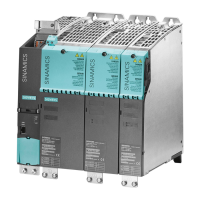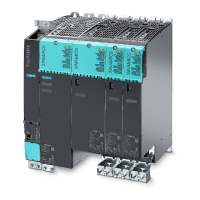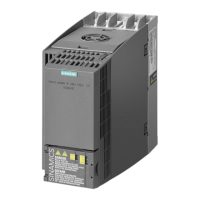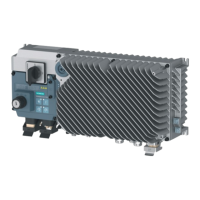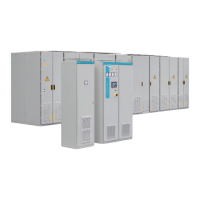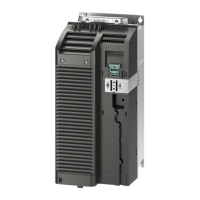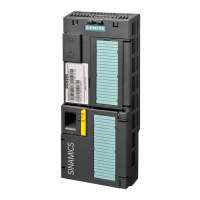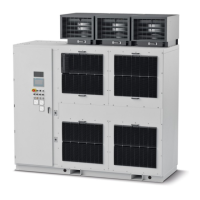Fundamental Principles and System Description
Engineering Information
SINAMICS Engineering Manual – November 2015
Ó Siemens AG
169/528
Commissioning information
In order to minimize to the greatest possible extent the inevitable temperature fluctuations which occur as a result of
load changes within a load duty cycle, drives with periodically recurrent load duty cycles and load duty cycle
durations ranging from several seconds to several minutes should not only be configured in accordance with the rules
described above, but the following points should also be taken into consideration. This applies in particular if the
current derating factor k
IGBT
calculated for the drive configuration is < 1.0.
The drive must either be commissioned with the configured pulse frequency or with meaningfully selected,current-
dependent switchover between different pulse frequencies.
If the drive is commissioned with a constant pulse frequency which is the same as the configured pulse frequency,
the power unit will be guaranteed to have an acceptably long lifetime.
An additional reduction in the temperature swings ΔT
Chip
can be achieved through current-dependent switchover
between different pulse frequencies. This is because the temperature rise can be minimized by operating the
converter at a very low pulse frequency in operating states with very high current. In operating states with very low
current, the drop in temperature can be minimized by operating the converter at a very high pulse frequency. By
using switchover between different pulse frequencies as a function of current, it is possible to reduce temperature
fluctuations and thus prolong the lifetime of the IGBTs.
Figure 1 illustrates the interrelationships using the example of a periodically recurrent load duty cycle with a load duty
cycle duration of 2 minutes and load current fluctuations ranging in magnitude between I
min
and I
max
.
Figure 1: Switchover between pulse frequencies as a function of current
In operation at the configured pulse frequency of 1.25 kHz = constant, the temperature characteristic over time
T
Chip1
(t) is shown by the black curve. The associated temperature swing ΔT
Chip1
remains within acceptable limits for
the purpose of preserving IGBT lifetime provided that the configuring rules described on the previous pages are
observed.
The implementation of current-dependent switchover between pulse frequencies 1.25 kHz and 2.5 kHz produces the
temperature characteristic over time T
Chip2
(t) as shown by the green curve. Through selection of the low pulse
frequency of 1.25 kHz during periods of load with I
max
and the high pulse frequency of 2.5 kHz during periods of load
with I
min
, the temperature swing ΔT
Chip2
is lower than the temperature swing ΔT
Chip1
, so that the corresponding effect
on the lifetime of the IGBTs in the power unit is positive. The difference in the temperature swing can amount to as
much as 5°C in practice, an effect which can increase the IGBT lifetime by a factor of 2 to 3.
Current-dependent switchover between different pulse frequencies can be implemented, for example, using a
combination of free function blocks and switchover between different drive data sets. For this purpose, the converter
or inverter output current is evaluated by a free function block known as the limiter block (LIM). If the current exceeds
a value corresponding to 1.2 times I
min
, the output r20232 is set to high. This signal initiates a switchover from a drive
data set with a high pulse frequency (in the example: 2.5 kHz) to a drive data set with a low pulse frequency (in the
example: factory setting 1.25 kHz). If the current drops below a value corresponding to 1.2 times I
min
again, the drive
data set with a high pulse frequency (in the example: 2.5 kHz) is activated again.
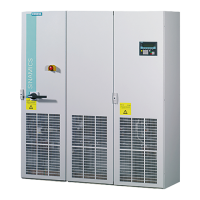
